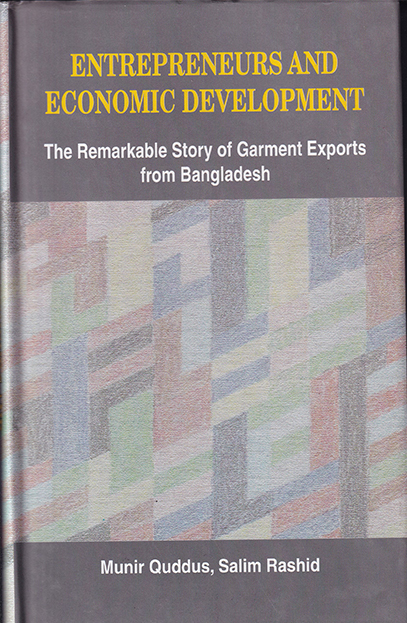
- Shop
- Business, Economics and Development
- Entrepreneurs and Economic Development: The Remarkable Story of Garment Exports from Bangladesh
Entrepreneurs and Economic Development: The Remarkable Story of Garment Exports from Bangladesh
https://uplbooks.com/shop/9789840515011-entrepreneurs-and-economic-development-the-remarkable-story-of-garment-exports-from-bangladesh-6498 https://uplbooks.com/web/image/product.template/6498/image_1920?unique=56f7a2e
| Language: English |
Tags :
Book Info
This is the first book that presents a comprehensive analysis of the apparel export industry of Bangladesh. Readymade garment exports from Bangladesh started modestly in the late 1970s primarily as a result of local initiatives. Soon the industry had the benefit of foreign collaboration in marketing, management, and production. After two decades of dynamic performance, interrupted by occasional crises, apparel exports from Bangladesh have blossomed into a multi-billion-dollar industry that currently employs over one million female workers, enabling them to improve their living standards and to eventually climb out of poverty. The authors focus primarily on the role of the entrepreneurs, the men and women who have led the industry over the years. Based on a sample of forty randomly selected factory owners, a profile of the garment entrepreneur is presented. In addition, the authors use a political economy approach to analyze the forces underlying the local and global clothing markets. A history of the apparel sector, as well as an overview of the industry, both domestic and global, is presented. The book also discusses future challenges for the industry and policy makers as the present structure built under the GATT rules come to an end in the year 2005.

Munir Quddus
Munir Quddus received his Ph.D in Economics from Vanderbilt University, USA. He is currently Dean of the College of Business at Prairie View A&M University and Professor of Economics. His research interests are: leadership and entrepreneurship, the history of economic thought, and economic development. Dr. Quddus is author of Entrepreneurs and Economic Development: The Remarkable Story of Garment Exports from Bangladesh (Dhaka: UPL, 2000).



